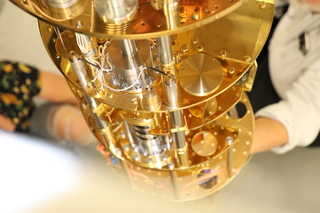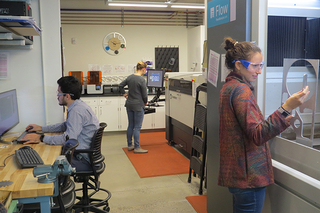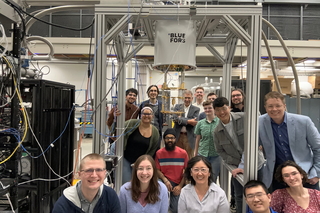Biographical Sketch:
I completed my bachelor’s in physics from Santa Clara University in 2015. In 2015-2016, I worked on developing microwave multiplexing electronics for X-ray and CMB sensor applications and designing the DM-Radio pathfinder experiment as a research assistant for Prof. Kent Irwin at Stanford University. I completed my doctorate in 2023, advised by Prof. Kam Arnold on developing the readout electronics and deploying the first Small Aperture Telescope for the Simons Observatory. I started as a Mossman Postdoctoral Fellow at Yale University’s Wright Laboratory in 2023, working on the analysis of Simons Observatory Small Aperture Telescope data and design and construction of the ALPHA and HAYSTAC-phase III axion haloscopes.
I believe that developing room for young members to succeed in large science collaborations is as essential as individual university support. To this end, I have actively developed structural changes to improve graduate and postdoctoral researcher representation within the Simons Observatory and ALPHA projects.
Research:
I work in the fields of Cosmology and Dark Matter direct detection. I am a member of the Simons Observatory (SO) Cosmic Microwave Background (CMB) experiment, and the HAYSTAC and ALPHA Axion direct-detection experiments.
For my Ph.D. research, I designed, constructed, deployed, and tested the first SO Small Aperture Telescope (SAT). Within SO, I focused on camera readout electronics: the SLAC Microwave Radio Frequency (SMuRF) electronics, which were custom built to read out the superconducting microwave multiplexer cryogenic circuit capable of measuring ~1000 superconducting camera pixels on a single readout line. I led early testing and design iteration with the SLAC (DoE National Research Laboratory) team. I ultimately oversaw the system integration and operation at the SO high-elevation site in the Atacama Desert in Chile. I maintained the telescopes since their commissioning (Oct 2023). In 2022, I began working on the SO SAT data reduction and analysis pipeline utilizing simulation and North American lab data as a predoctoral research fellow at the Flatiron Institute. I continue this effort with the on-sky data as a Yale Mossman Fellow.
I joined the HAYSTAC and ALPHA axion direct detection experiments at Yale. HAYSTAC is a microwave cavity haloscope that has set the tightest constraints on Axion-like dark matter in the 15-25 micro-electronvolt mass range operating since 2016. I am upgrading HAYSTAC to extend its sensitivity to a 30-35 micro-electronvolt mass range. ALPHA is a new experiment sited at Yale that will probe the 40-80 micro-electronvolt mass range using a new technique based on coupling the axion field to a tunable plasma resonance. I am designing and testing the ALPHA microwave receiver system and integrating the ALPHA haloscope at Yale.
Education:
Ph.D., University of California, San Diego, 2023
Honors & Awards:
Selected Publications:





